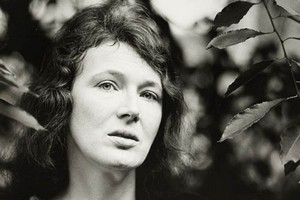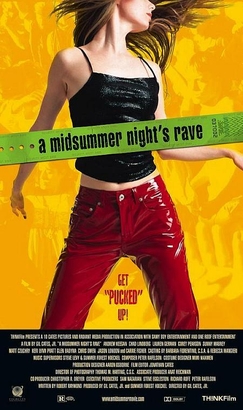
Sense and Sensibility is a 1995 period drama film directed by Ang Lee and based on Jane Austen's 1811 novel. Emma Thompson wrote the screenplay and stars as Elinor Dashwood, while Kate Winslet plays Elinor's younger sister Marianne. The story follows the Dashwood sisters, members of a wealthy English family of landed gentry, as they must deal with circumstances of sudden destitution. They are forced to seek financial security through marriage. Hugh Grant and Alan Rickman play their respective suitors.

Angela Olive Pearce, who published under the name Angela Carter, was an English novelist, short story writer, poet, and journalist, known for her feminist, magical realism, and picaresque works. She is mainly known for her book The Bloody Chamber (1979). In 1984, her short story "The Company of Wolves" was adapted into a film of the same name. In 2008, The Times ranked Carter tenth in their list of "The 50 greatest British writers since 1945". In 2012, Nights at the Circus was selected as the best ever winner of the James Tait Black Memorial Prize.

Neo-Victorianism is an aesthetic movement that features an overt nostalgia for the Victorian period.
Intertextuality is the shaping of a text's meaning by another text, either through deliberate compositional strategies such as quotation, allusion, calque, plagiarism, translation, pastiche or parody, or by interconnections between similar or related works perceived by an audience or reader of the text. These references are sometimes made deliberately and depend on a reader's prior knowledge and understanding of the referent, but the effect of intertextuality is not always intentional and is sometimes inadvertent. Often associated with strategies employed by writers working in imaginative registers, intertextuality may now be understood as intrinsic to any text.

A novelization is a derivative novel that adapts the story of a work created for another medium, such as a film, TV series, stage play, comic book, or video game. Film novelizations were particularly popular before the advent of home video, but continue to find commercial success as part of marketing campaigns for major films. They are often written by accomplished writers based on an early draft of the film's script and on a tight deadline.
A film adaptation is the transfer of a work or story, in whole or in part, to a feature film. Although often considered a type of derivative work, film adaptation has been conceptualized recently by academic scholars such as Robert Stam as a dialogic process.

Remix culture, also known as read-write culture, is a term describing a culture that allows and encourages the creation of derivative works by combining or editing existing materials. Remix cultures are permissive of efforts to improve upon, change, integrate, or otherwise remix the work of other creators. While combining elements has always been a common practice of artists of all domains throughout human history, the growth of exclusive copyright restrictions in the last several decades limits this practice more and more by the legal chilling effect. In reaction, Harvard law professor Lawrence Lessig, who considers remixing a desirable concept for human creativity, has worked since the early 2000s on a transfer of the remixing concept into the digital age. Lessig founded the Creative Commons in 2001, which released a variety of licenses as tools to promote remix culture, as remixing is legally hindered by the default exclusive copyright regime applied on intellectual property. The remix culture for cultural works is related to and inspired by the earlier Free and open-source software for software movement, which encourages the reuse and remixing of software works.

A Midsummer Night's Rave is a 2002 American film adapted from Shakespeare's A Midsummer Night's Dream released on November 1, 2002. The film stars Corey Pearson, Lauren German, Andrew Keegan, Chad Lindberg, and Sunny Mabrey; and was directed by Gil Cates Jr. It is set at a rave, rather than the forest where most of the original is set. The film received little attention from professional movie critics, but is considered a success with teen audiences, and has been used as an exemplar for a category of movies in more academic publications.
Linda Hutcheon, FRSC, OC is a Canadian academic working in the fields of literary theory and criticism, opera, and Canadian studies. She is a University Professor Emeritus in the Department of English and of the Centre for Comparative Literature at the University of Toronto, where she has taught since 1988. In 2000 she was elected the 117th President of the Modern Language Association, the third Canadian to hold this position, and the first Canadian woman. She is particularly known for her influential theories of postmodernism.
Darwinian literary studies is a branch of literary criticism that studies literature in the context of evolution by means of natural selection, including gene-culture coevolution. It represents an emerging trend of neo-Darwinian thought in intellectual disciplines beyond those traditionally considered as evolutionary biology: evolutionary psychology, evolutionary anthropology, behavioral ecology, evolutionary developmental psychology, cognitive psychology, affective neuroscience, behavioural genetics, evolutionary epistemology, and other such disciplines.

Literary adaptation is adapting a literary source to another genre or medium, such as a film, stage play, or video game.
Robert Stam is an American film theorist working on film semiotics. He is a professor at New York University, where he teaches about the French New Wave filmmakers. Stam has published widely on French literature, comparative literature, and on film topics such as film history and film theory. Together with Ella Shohat, he co-authored Unthinking Eurocentrism: Multiculturalism and the Media.
Over fifty films of William Shakespeare's Hamlet have been made since 1900. Seven post-war Hamlet films have had a theatrical release: Laurence Olivier's Hamlet of 1948; Grigori Kozintsev's 1964 Russian adaptation; a film of the John Gielgud-directed 1964 Broadway production, Richard Burton's Hamlet, which played limited engagements that same year; Tony Richardson's 1969 version featuring Nicol Williamson as Hamlet and Anthony Hopkins as Claudius; Franco Zeffirelli's 1990 version starring Mel Gibson; Kenneth Branagh's full-text 1996 version; and Michael Almereyda's 2000 modernisation, starring Ethan Hawke.
Assemblage refers to a text "built primarily and explicitly from existing texts to solve a writing or communication problem in a new context". The concept was first proposed by Johndan Johnson-Eilola and Stuart Selber in the journal Computers & Composition in 2007. The notion of assemblages builds on remix and remix practices, which blur distinctions between invented and borrowed work. This idea predates modernism, with the quote by Edgar Allan Poe, "There is no greater mistake than the supposition that a true originality is a mere matter of impulse or inspiration. To originate, is carefully, patiently, and understandingly to combine."
Alan C. Martin is a British comics writer best known as author of the comic strip Tank Girl.

The Mystery of a Hansom Cab is a mystery fiction novel by the Australian writer Fergus Hume. Fergus Hume was born in the UK and when he was 6 months old his parents emigrated with him to New Zealand. At 25 he moved to Melbourne where he lived for 3 years. He then departed for the UK where he lived for the rest of his life. He had some minor success in the UK as a playwright.The book was first published in Australia in 1886. Set in Melbourne, the story focuses on the investigation of a homicide involving a body discovered in a hansom cab, as well as an exploration into the social class divide in the city. The book was successful in Australia, selling 100,000 copies in the first two print runs. It was then published in Britain and the United States, and went on to sell over half a million copies worldwide, outselling the first of Arthur Conan Doyle's Sherlock Holmes novels, A Study in Scarlet (1887).

Little Women is a 1917 British silent historical drama film directed by Alexander Butler and starring Daisy Burrell, Mary Lincoln and Minna Grey. It was the first film adaptation of the 1868-69 two-volume American novel Little Women by Louisa May Alcott. It is now considered a lost film.
"Holy...!" is an exclamation of surprise used mostly in English-speaking countries.
Transmediality is a term used in intermediality studies, narratology, and new media studies, to describe phenomena which are non-media specific, meaning not connected to a specific medium, and can therefore be realized in a large number of different media, such as literature, art, film, or music. The medium from which a given phenomenon originated is either irrelevant or impossible to determine; it is not an adaptation of a phenomenon from one medium to another.
Postmodern Metanarratives: Blade Runner and Literature in the Age of Image is a non-fiction book by Décio Torres Cruz published in 2014 by Palgrave Macmillan.







